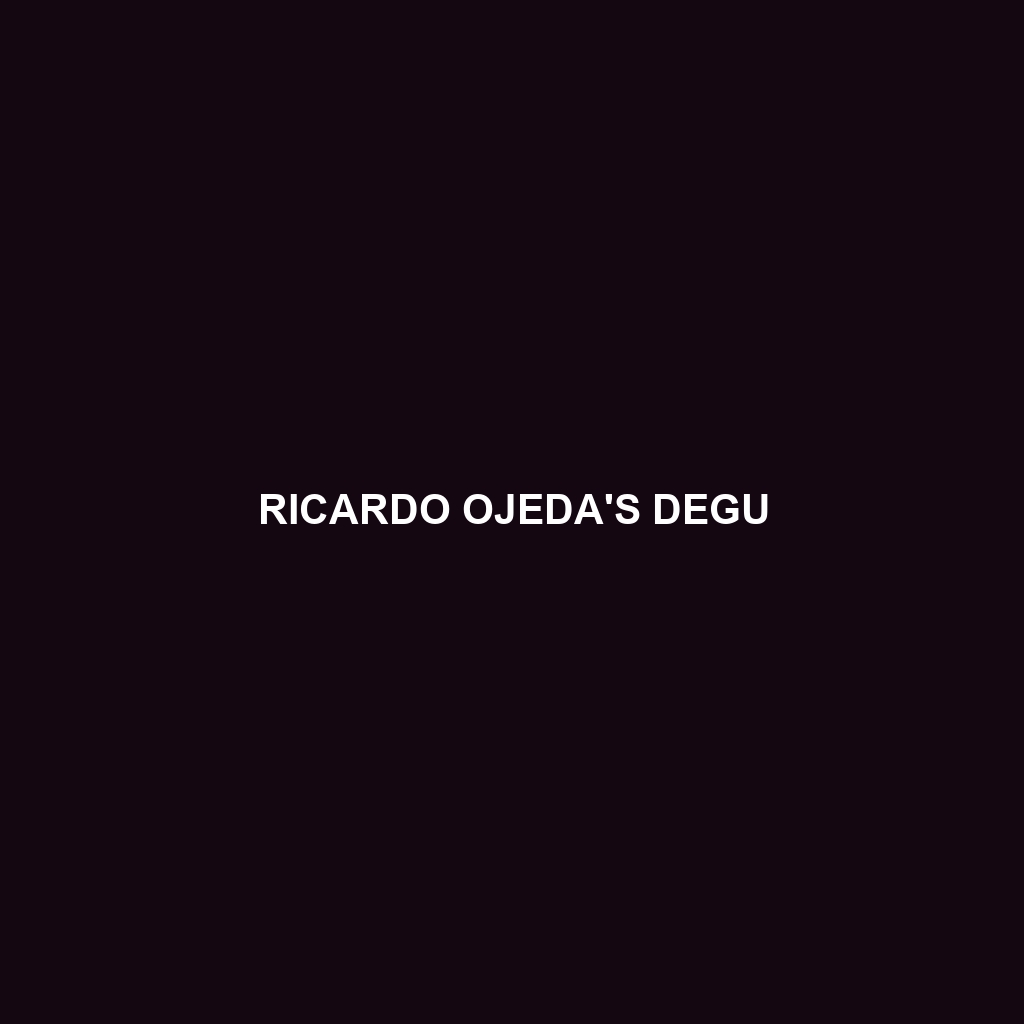Species Description: Ricardo Ojeda’s Degu
Common Name: Ricardo Ojeda’s Degu
Scientific Name: Octodon ricardojedai
Habitat
Ricardo Ojeda’s Degu is primarily found in the arid and semi-arid environments of central Chile, particularly within the Chilean matorral and montane scrub ecosystems. These small rodents inhabit rocky outcrops and shrublands, thriving at elevations ranging from 1,000 to 2,500 meters above sea level. Their habitat features a blend of dry conditions and sparse vegetation, crucial for their survival.
Physical Characteristics
This medium-sized rodent averages about 20 to 25 cm in length, including its long, bushy tail, which can be nearly as long as its body. The fur of the Ricardo Ojeda’s Degu is typically a buff or light brown color, providing effective camouflage against the rocky terrain. Its large eyes and distinctively long whiskers are adapted for foraging and navigating in low-light conditions. Their small rounded ears and slightly flattened body shape further distinguish them from other degu species.
Behavior
Ricardo Ojeda’s Degu exhibits primarily diurnal activity, making it an interesting subject for observational studies. These rodents are social creatures, often found in small family groups that work together to forage and defend their territory. They are known for their playful interactions and burrowing habits, which include digging extensive tunnel systems to create a safe living environment.
Diet
The diet of Ricardo Ojeda’s Degu mainly consists of herbaceous plants, seeds, and roots. They are particularly fond of grasses and herbaceous legumes, which provide them with essential nutrients. As opportunistic feeders, they may also consume fruits and succulent vegetation when available, adapting their diet based on seasonal patterns.
Reproduction
Ricardo Ojeda’s Degu typically breeds in the spring, with a gestation period of approximately 90 to 100 days. The female usually gives birth to a litter of 2 to 6 offspring, which are born fully furred and with their eyes open, allowing them to become independent relatively quickly. Parental care is shared within the group, enhancing the survival rate of the young.
Conservation Status
Currently, Ricardo Ojeda’s Degu is classified as Endangered due to habitat loss attributed to agricultural expansion and urbanization. Conservation efforts are focused on habitat preservation and raising awareness about this unique species to prevent further decline in its population.
Interesting Facts
One notable characteristic of Ricardo Ojeda’s Degu is its ability to adapt to different environmental conditions, which makes it a resilient species. They communicate through a variety of vocalizations and use scent marking as a means of establishing territory. Additionally, these degus can live up to 5 to 8 years in the wild, and longer in captivity.
Role in Ecosystem
As herbivores, Ricardo Ojeda’s Degu plays a significant role in the ecosystem by contributing to seed dispersal and promoting plant diversity. Their burrowing activities aerate the soil and facilitate nutrient cycling, benefiting surrounding flora. Their presence also supports the food web, as they are preyed upon by various predators, thereby maintaining ecological balance.
